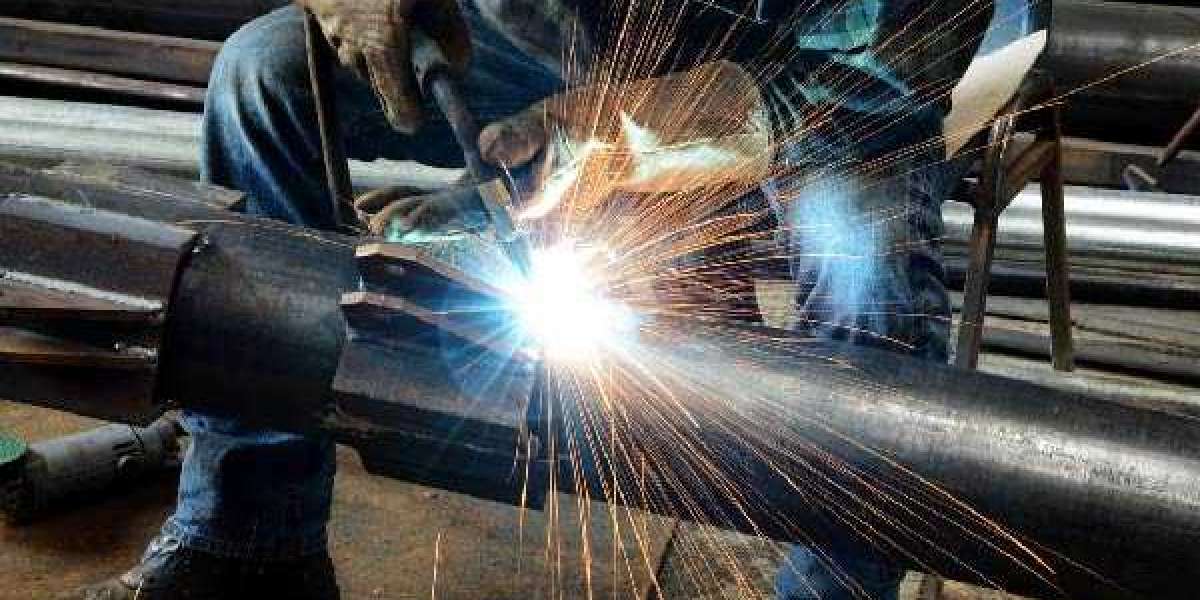Metal fabrication stands at the heart of every industrial advancement. From the foundations of high-rise buildings to the precision parts inside advanced machinery, fabricated metal components support almost every aspect of modern infrastructure.
While the core idea of shaping and joining metal hasn’t changed for centuries, the way it’s done has evolved dramatically. Today’s fabrication combines engineering, automation, and digital design to produce parts that are stronger, lighter, and more efficient than ever before.
The Role of Metal Fabrication in Modern Industry
Metal fabrication refers to the process of cutting, shaping, assembling, and finishing metal to produce structures and components. It bridges design and production, allowing engineers to turn blueprints into tangible, functional products.
Without fabrication, industries such as construction, transport, energy, and manufacturing could not operate. Every bolt, beam, panel, and bracket depends on precise fabrication to ensure safety, durability, and reliability.
Core Processes in Metal Fabrication
Although each project has unique requirements, most fabrication work involves several key processes working in harmony:
1. Cutting
This is the first stage of fabrication. Using modern techniques such as laser cutting, plasma cutting, or waterjet cutting, metals can be sliced with exceptional precision. Automated cutting systems not only save time but also minimise waste by optimising material layouts.
2. Bending and Forming
Once cut, sheets and bars are shaped into functional geometries using press brakes, rollers, and forming tools. Engineers carefully calculate bend radii and grain direction to prevent cracking and ensure consistent results.
3. Welding and Assembly
Welding remains the most common joining method, using techniques like MIG, TIG, and spot welding. In large-scale projects, robotic welding systems ensure uniformity and reduce manual fatigue. Bolting, riveting, and adhesive bonding may also be used depending on load requirements.
4. Machining and Finishing
CNC machining refines parts by drilling, milling, and turning to meet exact tolerances. Surface finishing processes, such as galvanising, powder coating, or anodising, improve corrosion resistance and aesthetics.
Applications Across Industrial Sectors
1. Construction and Architecture
Fabricated steel and aluminium form the structural skeletons of modern buildings. Beams, columns, staircases, and façades are produced to strict specifications for safety and durability. Prefabricated components also make on-site assembly faster and more cost-effective.
2. Transportation
The automotive, rail, and aerospace sectors all rely heavily on fabrication. Lightweight alloys are used to reduce fuel consumption, while precision machining ensures that every component meets performance and safety standards.
3. Energy and Utilities
From offshore wind turbine frames to oil pipelines and power-plant supports, fabricated metal enables the generation and distribution of energy worldwide. High-strength, corrosion-resistant materials ensure reliability in harsh conditions.
4. Manufacturing Equipment
Factories and warehouses depend on fabricated frames, conveyors, stillages, and platforms. These components keep production systems stable, organised, and efficient — forming the foundation of automated manufacturing lines.
Technology Driving the New Age of Fabrication
Metal fabrication has entered a digital era where automation, data, and precision engineering define success.
CNC Machining
Computer-controlled cutting tools now deliver accuracy measured in microns. CNC machining enables quick production of prototypes, small batches, and replacement parts without the need for extensive tooling.
Robotics and Automation
Robotic arms handle repetitive welding, bending, and material-loading tasks. This improves consistency and allows 24-hour production with minimal downtime.
Laser and Waterjet Systems
These advanced cutting methods can process metals of varying thicknesses with speed and precision, ensuring cleaner edges and minimal thermal distortion.
CAD/CAM Integration
Designs created in Computer-Aided Design (CAD) software are directly linked to Computer-Aided Manufacturing (CAM) systems. This digital link eliminates human error, shortens setup time, and ensures that every part matches its digital twin.
Sustainability and Material Efficiency
Modern fabricators optimise sheet layouts, recycle scrap, and use eco-friendly coatings. Energy-efficient machinery and better waste management contribute to greener production processes across the industry.
Challenges and Future Trends
While the industry continues to grow, it also faces challenges that drive innovation.
Skill Shortages: The demand for skilled welders, machinists, and designers is increasing as older tradespeople retire. Training and automation help bridge the gap.
Supply Chain Pressures: Fluctuating raw-material costs and global transport disruptions require agile production planning.
Precision Requirements: As industries demand higher performance and tighter tolerances, fabrication techniques must keep improving to maintain accuracy.
Integration of AI and IoT: Artificial intelligence and connected sensors will play a bigger role in predictive maintenance and real-time quality control.
The future will likely combine human expertise and intelligent automation, allowing fabricators to achieve new levels of efficiency and customisation.
The Economic Importance of Fabrication
Metal fabrication isn’t just about production — it drives economies. Fabrication shops supply essential parts to manufacturing networks, construction projects, and export industries. By creating components domestically, nations reduce dependency on imports and strengthen their industrial resilience.
This industry also supports a wide range of secondary sectors, including logistics, design, engineering, and maintenance services. For developing regions, investment in fabrication infrastructure often signals growth in broader industrial capability.
Design Considerations for Engineers
Engineers designing for fabrication must balance function, manufacturability, and cost. Some universal best practices include:
Avoid overly tight tolerances unless necessary.
Use consistent hole sizes and standardised fasteners.
Allow proper bend relief to prevent cracking.
Consider the grain direction when designing bends.
Include clear welding symbols and finishing notes in drawings.
Collaborating early with fabricators helps ensure that parts are both practical and economical to produce.
The Human Element: Craftsmanship Meets Technology
Despite the rise of automation, skilled technicians remain essential. Human expertise guides the programming of machines, quality inspection, and final assembly. The best results occur when advanced tools are combined with the precision and judgement of experienced engineers and metalworkers.
This partnership between people and machines defines the strength of modern fabrication — efficiency without sacrificing craftsmanship.
Conclusion
Metal fabrication continues to power industries, shape infrastructure, and enable innovation worldwide. Its evolution from manual blacksmithing to computer-driven precision engineering reflects how technology and craftsmanship can advance together.
From skyscraper beams to machine frames and transportation systems, fabrication ensures that the modern world runs smoothly and safely. As automation and digital manufacturing continue to progress, the industry’s future looks even stronger — driven by smart machines, sustainable practices, and skilled professionals.
For readers looking to explore more about the engineering and manufacturing landscape, connecting with a trusted UK metal fabrication company would offer valuable insight into how real-world projects come to life — from raw steel to precision-engineered solutions.







